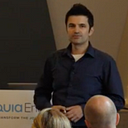"By Grabthar's hammer, you shall be avenged!" This line, repeated with such passionate conviction by Jason Nesmith's character, Commander Peter Quincy Taggart, speaks volumes. It's a cry for justice, seemingly for a fictional character. But in the context of the film, it transitions into something more profound. The line's resonance shifts when he leads the group against actual threats. It moves from a rehearsed dramatic flair to a genuine expression of courage. This captures the complex way media shapes identity and purpose. The characters begin with constructed roles, but the narrative pushes them to embody authentic courage and resolve. This transformation points towards a social process. Our roles, sometimes initially artificial, can serve as foundations for genuine connections and action when real circumstances demand it. The idea here being the virtual world and social spaces are influencing physical space and real life and our physical life might be nothing more than a very elaborate performance.
"Never give up, never surrender!" This iconic line, often spoken with utter sincerity by Guy Fleegman's character, Crewman #6, becomes an unlikely mantra. It begins as a repetitive, overused catchphrase of the show. However, it becomes the heart of the film’s message. It serves as the guiding force for the unlikely heroes. It highlights a deep and important cultural theme. Our everyday communication tools, the media apparatus, and the way stories are constructed influence our behaviors. The idea is that cultural symbols and messages possess the power to transcend their original intention and shape individual and collective behavior. It is a confirmation that in our networked world, cultural messages can act as catalysts for resilience, determination, and transformation. This simple repeated phrase reflects the power of narrative, shaping actions, and inspiring bravery in unforeseen circumstances. It showcases the dynamic interaction between media, personal agency, and cultural norms. "I see you" - This expression from Mathesar represents a moment of connection. It shows recognition between very different beings. In a way, it shows how understanding and communication bridge gaps between groups. It displays a longing for comprehension and acceptance. This simple greeting reveals a deep meaning. The notion that recognizing each other's presence and purpose promotes stronger relations. In a world often divided, this sentiment serves as a reminder to look beyond superficial difference, and seek real connections with those around us. The core of the communication should revolve around seeing other entities and treating each other as equals. The line becomes a kind of a cultural commentary on understanding in our interconnected world. A call to perceive the essence of being that unites us all.
